How to Feed & Maintain your Sourdough Starter
You’ve done it! You’ve created a living batter filled with wild yeast. Now let’s see how to feed & maintain your sourdough starter.
If you haven’t made your starter yet, visit this post to see how to make a sourdough starter from scratch.
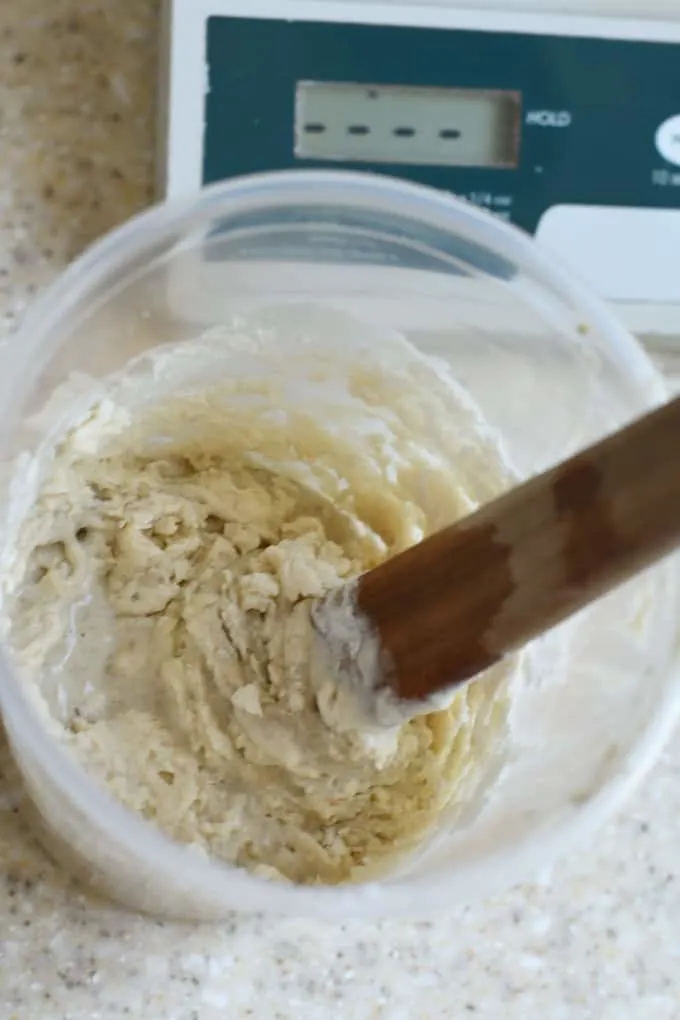
Right off the bat I’m going to say that there are a million ways to feed, maintain and use a sourdough starter. In fact, after you’re done reading this post, you should read through my instructions for How to keep a small sourdough starter to see of that method would work better for you.
I am going to outline for you how I maintain my sourdough starters. I tend to have a fairly relaxed attitude towards the process. It works for me and I think my approach can work for you if you don’t bake bread every single day (and even if you do).
At the end of the post you’ll find a how-to card that lists the ingredient amounts and steps to follow each time you feed your starter.
But first I’m going to give you all the how’s and why’s and try to answer any questions you might have.
Tips for using and maintaining your sourdough starter:
- Since I don’t bake every day, I keep my starters (yes, I have 3) in the refrigerator.
- If I’m making a 2-day recipe (most of mine are) I take the starter out of the refrigerator early in the morning of the day I’m making the dough. If the starter is inactive I feed it right away and it should be ready by early afternoon.
- If I’m making a 1-day recipe, I’ll take the starter out the night before and feed it if it’s inactive. It should be ready to use first thing in the morning.
- When the starter is cold from the refrigerator, I feed the starter using fairly warm water, warmer than body temp. The warm water will jump-start the cold starter.
- If the starter has been fed within the last 2-3 days, and has been refrigerated, you can probably go ahead and use it without feeding.
- If you’re not sure if the starter is active, drop a dollop into a bowl of water to see if it floats. If it does, it’s ready for baking.
- I write all my sourdough recipes to use 8 oz of active starter. After using 8 oz of starter in the recipe, I’m left with 4 oz of starter, exactly the right amount for feeding.
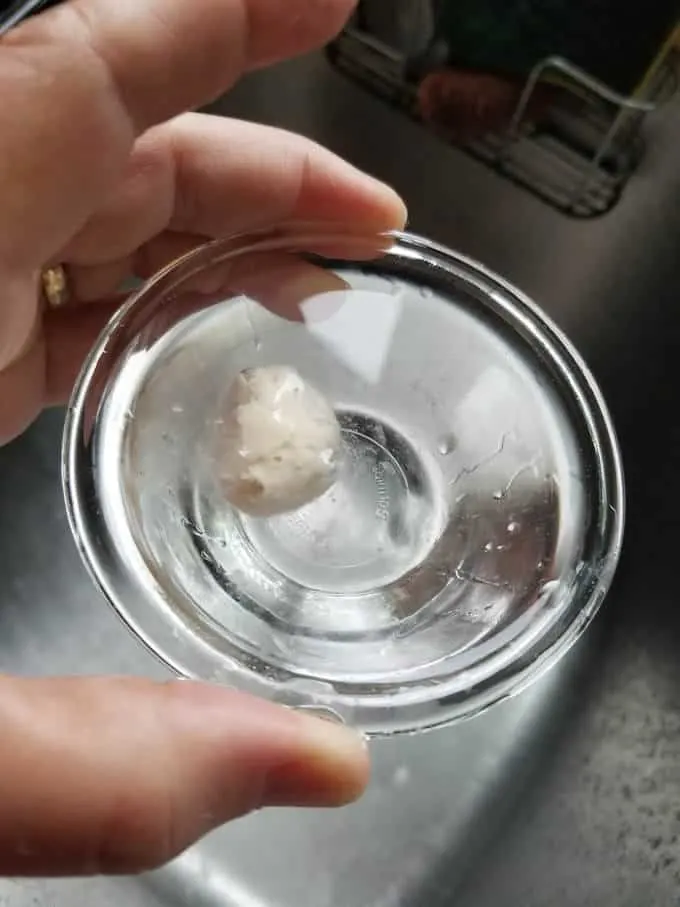
Schedule for feeding your sourdough starter:
- Your starter needs to be fed about 1x per week if refrigerated, and every day if left at room temperature.
- Generally, about 5-6 hours after feeding my starter is ready. The time may vary based on room temp, dough temp, etc. The starter should have doubled in volume and started to recede and/or pass the float test.
- I take my starter out of the refrigerator once a week for feeding, even if I’m not baking. Although, truth be told, I often go longer than a week between feedings and I haven’t killed it yet.
- Did you know you can dry your sourdough starter? Dried starter can be kept indefinitely.
- After you’ve removed the portion of starter for baking, feed the starter again and leave it at room temperature for 3-4 hours before putting it back in the refrigerator.
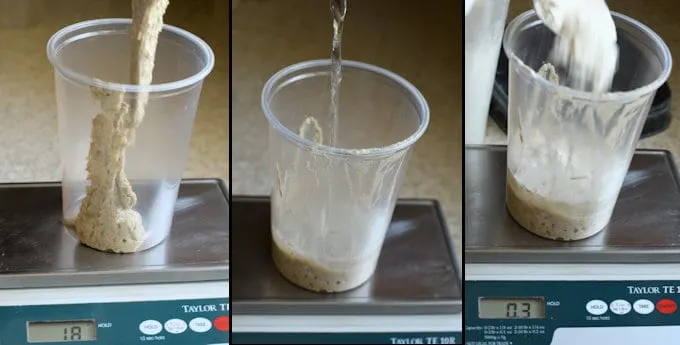
FAQs about feeding & maintaining Sourdough Starter:
Honestly, I’ve gone longer than a month without feeding my starter and I haven’t killed it yet. Give it a feeding and see if it wakes up. If it’s alive, keep feeding it until it is reliably doubling in size within 4-5 hours.
If you go more than about 2 weeks between feedings, you might want to give the starter 2-3 feedings before using. A starter that hasn’t been fed for weeks will be quite sluggish and your dough won’t be as lively.
If your starter was fed a day or two before, it’s possible to use the starter straight from the refrigerator. Give it a float test to make sure it’s active. The dough may take a little longer to ferment since the temperature of the dough will be colder.
It’s called “hooch” and don’t worry, your starter is still alive. Just stir that water back into the starter before feeding. Again, you might need 2 feedings to completely revive the starter since it’s been quite dormant.
To maintain your starter at 100% hydration it is best and most accurate to weigh your ingredients. If you’re just a little bit off every time you feed, eventually, your starter could be thrown out of balance.
No problem, use the amount of starter called for in the recipe. Then weigh out 4 oz of the remaining starter for feeding and discard the rest.
If you continually feed the starter without discarding, you’ll end up drowning in starter.
Yes, even if the discard is not active enough for baking bread, you can add it to many other recipes as a flavor and texture enhancer.
Unless you’re going away for an extended time, your starter should be just fine for a couple of weeks in the refrigerator. If you’ll be gone really long-term, put the starter into the freezer or dry it. Frozen or dried starter will need several feedings to rejuvenate.
If you appreciate this detailed information, I’d really appreciate a 5-star review.
How to Feed Sourdough Starter
Ingredients
- 4 oz unfed sourdough starter
- 4 oz all purpose flour
- 4 oz water (room temperature)
Instructions
- Weigh 4 oz of your unfed starter into a clean container. Discard the extra starter (see note)4 oz unfed sourdough starter
- Add the flour and water and mix until combined. Set aside at room temperature.4 oz all purpose flour, 4 oz water
- The starter is ready to use when it has doubled in volume and a small spoonful floats when dropped into a bowl of water. This generally takes 4-5 hours but the time can vary based on dough temperature and room temperature.
- If you do not plan to bake with the starter on the day it is fed, refrigerate 3-4 hours after feeding.
- Feed refrigerated starter weekly. If you go longer than a week without feeding, you may want to give the starter two feedings before using.
Would you like to save this recipe?
As an Amazon Associate and member of other affiliate programs, I earn from qualifying purchases.

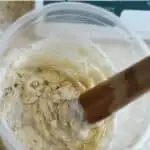





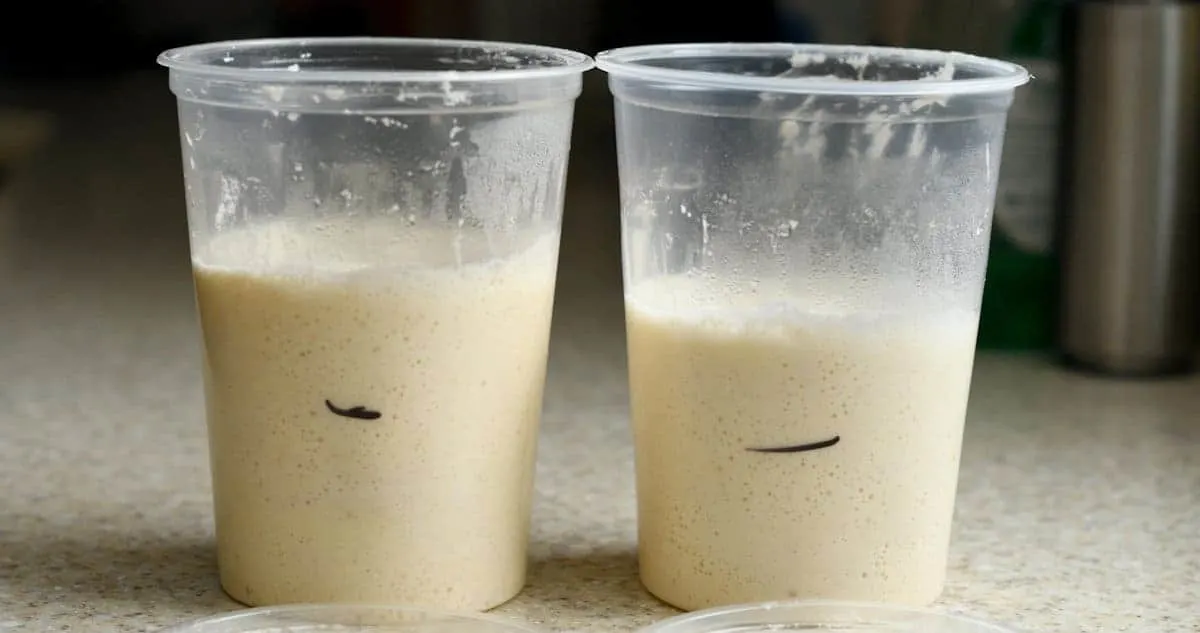
Hello Eileen,
Awesome website!!!
Would it be possible to take the leftover active 4oz (after removing the 8oz for baking), and put that 4oz directly into the fridge. A week later take out that 4oz from the fridge building it back up to 12oz, bake, and repeat. At a one week baking schedule there would be no need to discard anything.
In your feeding instructions next to the 4oz measurements it is 112g for starter and flour, however the water reads 120ml. Should this not be also 112g? 112g will also read 112ml on the scale.
Thank you.
Kind regards,
Danny
I understand what you’re asking. Basically, you want to keep a smaller starter so you have less discard. It would possibly work. If you’re looking to have less discard you might want to try keeping a small starter. Using the small starter method there is only 2 oz of discard each time you’re ready to bake. Sometimes, if it’s only been a few days since my last bake, I won’t discard the 2 oz and will just go ahead with the 3 oz feeding. But I have found that giving the starter 2 feedings before making the dough results in a more active dough. By weight the water would be 112g, by cup measure 120ml.
I’m a novice. This is great info. Question : can I claim my sour dough starter as a dependent on my taxes?
Lol
Ended up throwing mine out. It never grew, never got yeasty. Very disappointed. I followed the directions that I thought were well written. The temp in my house is about 74 so I wondered if that was the problem. So disappointed.
I need some help. I’m new to sourdough baking. I was given some starter to refrigerate. Was told to feed once a week. If I use equal parts of starter, flour, water, and have to discard what’s left, how will I ever have enough to bake a loaf of bread?
You can build up your starter over a few days. Read through this post about maintaining a small starter to see how it’s done. Let me know if you have any other questions.
@Eileen Gray, I was told if it’s is the refrigerator, I feed it once a week. Do I discard some before I feed it?
Yes, you always need to discard before feeding. Otherwise the starter would grow exponentially and you’d end up drowning in starter.
Hi! I’ve got a bit of a niche question. I fed my starter this morning, left it for a few hours to ripen it, and have now made up my dough for the bread I will bake tomorrow. My question is, for the starter I’ve got left in my jar, should I be feeding that right away after removing the portion I need for the dough? Or should I be leaving it alone until it’s about 12 hours after the last feeding time as not to over-feed it? For context I now want to stick it in the fridge so I can revert to weekly feeding times. Thanks so much in advance! X
I always feed my starter right after removing the portion to mix the dough. I then leave it out for a couple of hours to give the yeast time to get going. Then it goes in the fridge until next time I plan to bake. If I plan to bake within a day I leave it out.